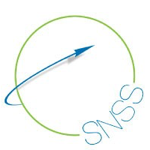Speaker
Ms
Sofi Nöjd
(Physical Chemistry, Lund University)
Description
Soft and deformable ionic microgels such as poly(N-isopropyl-acrylamide) co-acrylic acid (PNIPAM-co-AA) microgels have shown to be well suited as model systems to study the phase behaviour found for particles interacting via a soft isotropic potential. Additionally, subjecting these particles to an alternating electric field induces a dipolar contribution to the interaction potential, which strongly depends on the amplitude and frequency of the applied field. This additional, tunable and directional attraction allows us to explore and deepen our understanding of systems interacting via an even more complex anisotropic potential.
In the dilute regime, previous studies using confocal microscopy have shown that the system undergoes a fluid to string-fluid transition with increasing field strength [1]. At high densities, we see that a face-centred cubic (FCC) crystal diffusively transforms into a body-centred tetragonal (BCT) crystal through a nucleation and growth mechanism. Surprisingly, when turning off the field the system does not relax back to the stable FCC phase, but transforms into a long-lived metastable body-centred orthorhombic (BCO) phase through a non-diffusive martensitic transition [2]. Currently the reason for this path-dependent sequence of crystal-crystal transitions is not clear, and we need more information about the effective interaction potential between the particles. Moreo-ver, given the softness of the microgels, the particles can also shrink, interpenetrate and deform upon string formation, and thus the resulting potential will strongly depend upon the actual particle size and shape as a function of field strength and particle concentra-tion. This requires high spatial resolution, and we thus use small-angle neutron scatter-ing experiments under so-called zero average contrast conditions in order to extract the single particle structure as a function of an increased field strength. We present results obtained using a custom-made sample environment that allows us to study the size and shape of individual particles in-situ while they undergo field-induced transitions to string fluids or ordered colloidal crystals.
[1] S. Nöjd, P. S. Mohanty, P. Bagheri, A. Yethiraj and P. Schurtenberger, Soft Matter, 9 (2013) 9199
[2] P. S. Mohanty, P. Bagheri, S. Nöjd, A. Yethiraj and P. Schurtenberger, Phys. Rev. X 5 (2015) 011030
Primary author
Ms
Sofi Nöjd
(Physical Chemistry, Lund University)
Co-authors
Mr
Christopher Hirst
(Physical Chemistry, Lund University)
Dr
Marc Obiols-Rabasa
(CR Competence AB)
Prof.
Peter Schurtenberger
(Lund University)
Dr
Priti Mohanty
(School of Applied Sciences, KIIT University)

